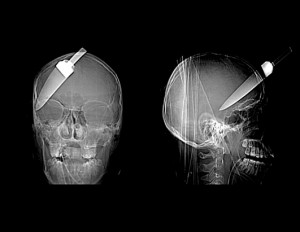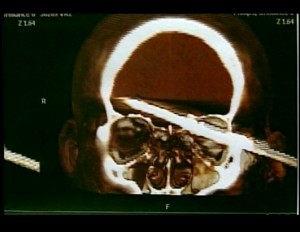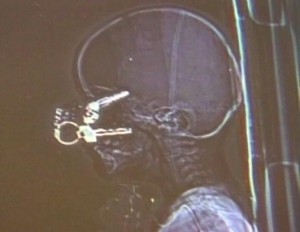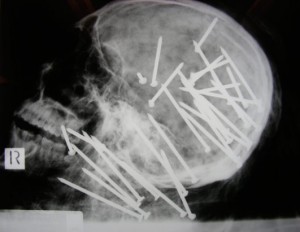June 24th, 2009 by KevinMD in Better Health Network, Health Policy
No Comments »

It’s not because of what you think.
The common thought is that health insurers will quiver at the sight of a government plan, with the public option offering lower premiums to patients due to leaner administrative burdens.
But Charlie Baker, CEO of Massachusetts’ Harvard Pilgrim Health Care, isn’t so worried about that. Instead, he first wonders about the government’s competence in handling another large bureaucratic program:
I worry less about the impact of having the federal government writing the rules and competing directly with plans like Harvard Pilgrim for business, and more about the federal government’s ability to do this at all, much less do it well. Merely coordinating basic demographic information between Social Security, Medicare and Medicaid – three big federal programs that millions of Americans belong to – can be a chore for beneficiaries, their children, and their health plans. It’s not unusual for our members to spend six months or so trying to get this stuff corrected before they call us and ask us to step in on their behalf.
And next, he has zero confidence that the government will be fiscally disciplined administering such a plan. With how it handled the General Motors fiasco as an example, Mr. Baker wonders how any proposed public plan “will negotiate with providers for a mutually agreeable fee . . . will balance its books every year . . . will have to cover its costs of doing business – just like the private plans do – [but] won’t add to the federal deficit.”
Is that even possible?
*This blog post was originally published at KevinMD.com*
June 15th, 2009 by KevinMD in Better Health Network
No Comments »

A 90-year old man with a pancreatic mass, almost definitely pancreatic cancer, was admitted to a hospital.
Surgeon Jeffrey Parks does the initial surgery consult on this terminal case, and recommends hospice care.
The next evening, he’s shocked by the “astounding amount of medicine [that] had been practiced” during the day:
Consults had gone out to GI, oncology, and nephrology. The GI guy had ordered an MRCP and, based on some mild distal narrowing of the common bile duct, had scheduled the patient for a possible ERCP in the morning. A stat CT guided biopsy of the liver lesions had also been done. The oncologist had written a long note about palliative chemotherapy options and indicated he would contact the son about starting as soon as possible. The nephrologist had sent off a barrage of blood and urinary tests.
It’s often said that we spend the most money in the world on futile care, often with little benefit to the patient. The preceding account was that phenomenon in action, replicated thousands of times on a daily basis.
A microcosm of what’s wrong with American medicine indeed.
*This blog post was originally published at KevinMD.com*
June 9th, 2009 by KevinMD in Better Health Network
No Comments »

The military is learning from the dead.
In the past five years, every soldier who was killed in Iraq and Afghanistan has been given a CT scan. Why? In the hopes of creating a database of war injuries, which can be used to better equip and treat future soldiers.
The effort has already paid dividends. While examining the data, it was noticed that chest tubes used to treat pneumothoraces in the field were too short. The standard tubing would have been appropriate for 50 percent of soldiers, versus longer tubing that would fit 99 percent.
Also, it was because of these “autopsy scans” where it was noticed that many of the troops died from wounds in the upper torso, which could have been prevented with the appropriate body armor. On the basis of these findings, the military rushed more armor plates to Iraq.
It’s an interesting piece, and goes on to discuss the sensitive implications of the findings to family members:
The possibility that a relative burned to death is a particular source of anguish for families, and one area in which CT can outperform an autopsy. In a body damaged by flames, CT can help pathologists figure out whether the burns occurred before or after death. The scans can also tell whether a person found in water died from drowning.
It’s truly remarkable to see how much that can be learned after death.
*This blog post was originally published at KevinMD.com*
June 5th, 2009 by KevinMD in Better Health Network
No Comments »

A bizarrely morbid slide show of radiology images showing various patients impaled by foreign objects.
If you need more reasons to be wary of nail guns, fishing spears, keys, or knives, look no further.




*This blog post was originally published at KevinMD.com*
May 26th, 2009 by KevinMD in Better Health Network
No Comments »

The following is a reader take by Paul Ravetz.
Does the “Art of Medicine” really exist, or perhaps more importantly, can it do so in the computer age?
Computers are both the boon and the bane of medicine. Electronic medical records (EMRs) are excellent for retrieval of information about labs, medications, and past medical history of our patients. These records are much easier to access than our old paper charts. However, I feel that the Achilles Heel of these advances lies in the fact that physicians are so busy inputting information into their computers that they do not spend enough time communicating with the patient.
Communication with your patient is the epitome of the Art of Medicine. It is vital that physician and patient understand each other. This includes not only what the patient says but what they mean. This takes time, a commodity which is in short supply in the age of EMR. One should always remember a basic caveat about computers, which is, “garbage in, garbage out.” If wrong information is fed into the computer, it doesn’t matter what algorithm that you use because you will be following a false trail.
Computerization of medicine will lead to great advances if it is implemented properly. However, the way things are presently being done cheats the patient out of the most important part of the doctor patient relationship – time to communicate. I always remember the precept advanced by Sir William Osler, the father of modern medicine, “Listen carefully doctor, the patient is giving you the diagnosis.”
The combination of the computer age along with the time to listen to the patient and to accurately define their problem will indeed lead to a new age in medical care, but to ignore one or the other is not to fulfill our obligation to our patients.
Paul Ravetz is a family physician.
*This blog post was originally published at KevinMD.com*















